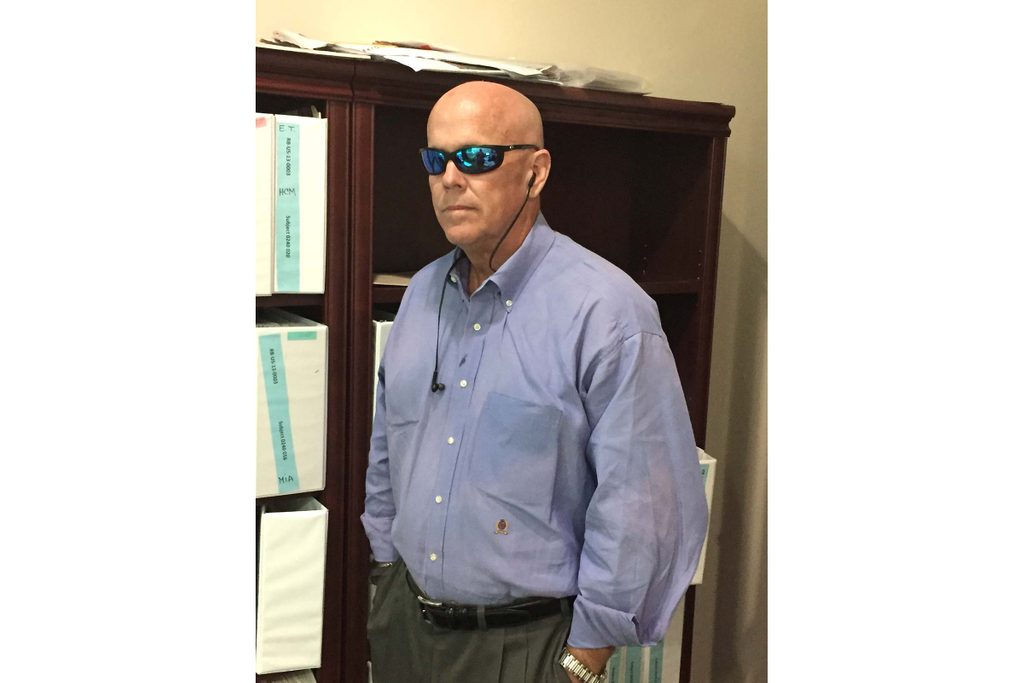I Lost My Job and My House to Opiate Addiction—Here’s What Saved Me
Updated: Jun. 28, 2022
The U.S. Department of Health and Human Services considers opioid addiction to be a growing epidemic, with more than 6 out of every 10 drug-related deaths involving an opiate. Scott Jernigan was living the American dream when his life was torn apart by an opioid. This is his story.
 Scott Jernigan was never the type of person you might expect to become a drug addict. He had a wife and two successful children, one of whom just earned a master’s degree. He had a well-paying job, a house on a river, and even owned his own boat. The unraveling began when Jernigan, 53, had back surgery for an injury.
Scott Jernigan was never the type of person you might expect to become a drug addict. He had a wife and two successful children, one of whom just earned a master’s degree. He had a well-paying job, a house on a river, and even owned his own boat. The unraveling began when Jernigan, 53, had back surgery for an injury.
At first, he made the mistake of returning to work too soon. Injuring himself again, he required another surgery to repair the crumbling disk in his back. His surgeon had yet to return from a vacation when the second injury occurred, and to tolerate the excruciating pain until his next operation, he began to take opioid painkillers. It was during this time that he believes his opiate addiction began. “By the time I received my second surgery to repair the disk, three weeks after the first surgery, I knew I was addicted to painkillers,” Jernigan says. (Here’s what your doctor probably won’t tell you about painkillers.)
In the beginning, he was able to get the prescription opioids from local pain clinics, but as his need for the drug grew, he turned to the streets and bought them from dealers. At one of his lowest points, even his drug dealer told him to slow down, as he was consuming 30 of the 30-milligram pills per day. Driven by only the desire to get his next fix, he spent $150,000 of his family’s savings in one year. He subsequently sold his home on the river as well as his boat. Jernigan became so focused on finding more drugs, he lost all interest in work, and quit his job without a second thought. He recalls that at one point, his wife even caught him trying to snort the pills. (Here are 10 signs you might be slipping into a pain pill addiction.)
Although he recognized that his addiction had taken over his life and was affecting his family, his efforts to attempt to quit the drug failed repeatedly, as each time the withdrawal symptoms were simply too much to bear. Close to losing his family along with the home they shared, Jernigan realized he couldn’t fight the battle alone and contacted his doctor. Jernigan reflected, “I was at a point where I lost my boat and second home, had spent way too much money, and I was in a vicious cycle of trying to quit and then relapsing to avoid the withdrawal symptoms. I decided I needed help.” Addiction often affects family members as much as the addict, and his wife was no exception. “My wife knew I was struggling but also was having a hard time dealing with the struggle of having an addicted husband. Our house and my family were on the line, and I knew I needed to find a doctor to help me,” he says. In the two years since taking opioids, his addiction nearly cost him everything. “I was sick and tired of being sick and tired,” Jernigan recalls.
His doctor suggested he take part in a drug trial of buprenorphine, which treats opioid dependence. The medication was delivered by an implant placed under the skin, which releases a steady dose of the drug. This prevents withdrawal symptoms and reduces cravings. Buprenorphine is approved by the Food and Drug Administration for this purpose (combined with counseling and behavioral therapy) and works by binding to the same receptor as opioids.However, it binds to them more tightly, so it stays locked in longer, and it locks out any other opioid medication. So even if Jernigan were to take an opioid pill, it would have no effect, because the buprenorphine would block it. The drug played a profound role in his recovery, says Jernigan.
Since beginning treatment for his addiction, Jernigan has remained clean and is back to himself. He credits the medication for saving his life, adding, “My wife was the first to point out that I had finally returned to being the happy, ambitious person she used to know—in fact, after years of being unable to appreciate anything except getting high, she caught me whistling and singing!” He now travels frequently for work, and the implanted medication has proven to be an easy and efficient way of receiving treatment, and he prefers it to taking daily pills. (Here are 14 medications pain doctors try to avoid.)
Although his days of addiction are in the past, Jernigan won’t soon forget them. “I’m reminded constantly of my addiction,” he says. “I’m reminded when I take the buprenorphine pill each day, by the look on the pharmacist’s face when I pick up my prescription each month, and when I go on a trip with my family and have a moment of panic when I can’t remember if I’ve packed my medication.” He is quick to recommend the life-saving treatment to others, advising others struggling with opioid addiction, to talk to their doctor about buprenorphine. “An addict is not going to get better until the pain of withdrawal is gone,” he says.
